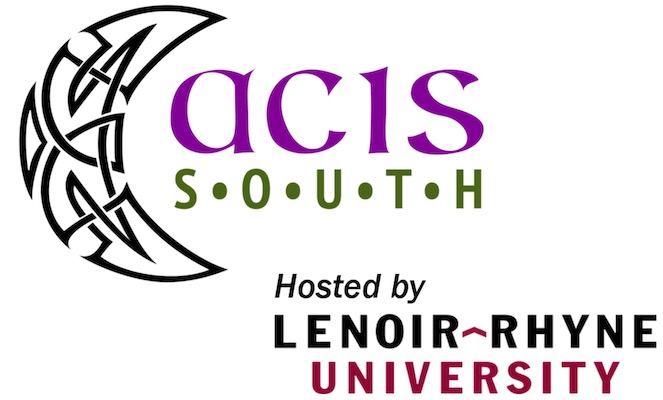Francis Ittenbach
Emory University
Francis Ittenbach is a student in the English PhD program at Emory University. He focuses primarily on ecocritical approaches to twentieth-century Irish and British poetry. Francis is currently co-curating an exhibit of poetry by Irish women drawing on Emory’s archival collections at the Stuart A. Rose Library
“Ascendant Landscapes in Seamus Heaney’s Later Poetry”
“Ascendant Landscapes in Seamus Heaney’s Later Poetry” takes an ecocritical approach to the poet’s original writings from Electric Light onward in engagement with his translation of Aeneid Book VI. The paper draws together instances of emergence from the mythological underworld and those of terrestrial ascendance to examine Heaney’s poetic usage of ecological and geological imagery as a sort of grounding for the sense of airy “lift” often associated with his later aesthetics, particularly for those poems involving the supposed boundaries between the living and the dead.
Makenzie Fitzgerald
Emory University
Makenzie Fitzgerald is a PhD student in English at Emory University, focusing on contemporary Irish poetry and drama. Her research looks at the archives of Seamus Heaney, and she is currently co-curating an exhibit on the special collections of poetry by Irish women at Emory’s Stuart A. Rose Library.
“Tollund on the Tube: Draft Developments of Seamus Heaney’s ‘The Tollund Man in Springtime'”
Critical interpretations of “The Tollund Man in Springtime” from Heaney’s 2006 collection, District and Circle, have largely found the poetic sequence to be optimistic, even redemptive, arguably overlooking the darker political undertones of the poem. However, drafts of the poem, as well as an earlier version published in the limited-edition collection, A Shiver, reveal the sequence’s intense connection to other, more overtly political poems in District and Circle. Through close readings of the changes made to the various versions of the poem over time, we can better contextualize “The Tollund Man in Springtime” within Heaney’s poetic explorations of the growing threats of climate crisis and global terrorism, and thus place this poem in conversation with Heaney’s other significant works of politically-conscious poetry.
Brendan Cocoran
Indiana State University
Brendan Corcoran graduated from Emory’s PhD program in English. He is an Associate Professor of English at Indiana State University, where he works on twentieth-century and contemporary Irish poetry as well as the intersection of literature and climate change. An essay on Heaney and climate change came out in 2018.
Seamus Heaney’s Shield of Perseus
In a remarkable interview with Patrick Wright for the BBC Radio 3, Night Waves programme in 1998, [16.09.98], Seamus Heaney is invited to comment on the “motif” of the bog bodies, drawn from the pictures in the P. V. Glob’s book, The Bog People, and how they, according to Wright, “became your way, in a sense, of writing through those years.” Heaney’s remarkably revealing response to Wright’s articulation of the received understanding of the bog body poems, insists on the inaccuracy of this long-standing conventional wisdom: “When I think of those poems I wrote about the bog bodies, I think I was holding them like a Perseus Shield almost against what was happening. I tried to make up explanations of why these poems were relevant to the situation, as it were, that there was a parallel between what was happening in Iron Age Jutland and what was happening in 20th century Ulster in Ireland.”
Heaney’s initial acknowledgement here, that he felt a need “to make up explanations of why these poems were relevant to the situation,” speaks to the intense excess of meaning these poems bore for Heaney at the time of their writing and publication—and also decades later. Like the bodies themselves, they proved to be not only uncategorizable but uncontainable. Heaney reiterates this point moments later in the interview, saying: “but when I read the poems now, they aren’t quite about Northern Ireland; they’re about the bog bodies.” For all their critical and cultural charge and the contestation that they have prompted over the years, this liberation of the bog body poems from their reduction to “Troubles poems” allows them (with their subjects, the bog bodies themselves and the phenomena that produced them) to play a more powerful yet more mysterious and more ambiguous role for the poet. In particular, Heaney’s suggestion that the poems were “like a Perseus Shield” held up to “what was happening” at once allows the poems their irrevocable ties to the violence of their moment while simultaneously raising a host of representational questions once some daylight appears between them and the Troubles. This paper explores Heaney’s use of the bog body poems (and the bodies themselves) as just such a shield. With Perseus’ shield serving less as a defensive tool than an offensive weapon—a way of seeing death’s threat and acting in response—this image defines the manner in which the full extent of the bog body poems and how they are addressed from 1970 to 2010 confronts not the past of Irish political history but the ever-tightening noose that is the “horizon of dread” defining our climatological and ecological future.
